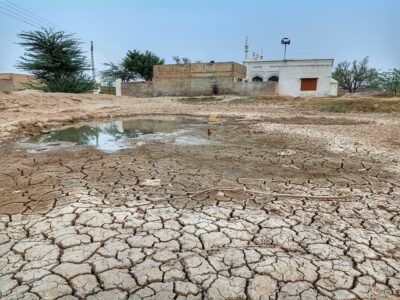
America’s Water
As part of the America’s Water Initiative, supported by the National Science Foundation, we have been working on understanding the past and assessing the future of Water-Energy-Food outcomes for the U.S. under climate variability. In 2017, we explored the human response to climate and how our actions impact on groundwater, reservoir management, and water risk, as well as detecting potential water quality issues. We advanced the development of our integrated model, AWASH, aimed at understanding how water is used across the country, informing the future of water in the U.S., and the developments needed to secure water supplies to support the economy.

Residents of Oroville, California, were evacuated after damages to the nation’s tallest dam were discovered on both the main and auxiliary spillways, causing fear that billions of gallons of water would flood the surrounding area. Water Center director Upmanu Lall commented on the situation in a blog post, Oroville Dam Crisis is a Call to Action on U.S. Water Infrastructure; an Op-Ed piece in CNN, Oroville is the best warning that infrastructure matters; and a piece in Undark Magazine, The Oroville Dam Crisis Could Be the First of Many. The crisis happened to come just days after CWC researchers published a paper in Water Resources Research, The Future Role of Dams in America.

We have been identifying the rapid deterioration of affordable access to safe drinking water and sanitation, as well as increasing risks from climate hazards due to aging infrastructure. In the coming years, we will work with partners on strategic projects to address these challenges, especially for poor and disadvantaged U.S. communities.
Water in the Mining Industry

Our project on financial risks associated with water in the mining industry, sponsored by Norges Bank Investment Management, has developed novel tools and analyses to help quantify water, climate, and environmental risks associated with metal mining. Mining is embroiled in social conflicts due to water-related environmental impacts. Our work using novel data analytics with comprehensive physical, socio-economic, and environmental data sets that we compiled establishes a quantitative basis for the emergence of these social conflicts. We identified the exposure pathways and hydroclimatic triggers, and the vulnerability of mines and mining portfolios to these risks. Novel statistical and financial modeling approaches will translate into robust estimation and disclosure of these risks.
We also identified critical gaps in environmental impact assessment and regulation that lead to cumulative water impacts and propose a new science informed dynamic regulatory strategy that will help reduce these impacts and promote sustainable mining. Our modeling approaches are also relevant for financial assessment of physical climate risks for business, and highlight the high-risk concentration that multi-national portfolios may face from floods and droughts.
Global Floods
Our global floods work continued, with support from the World Bank, to define an operational framework for the rapid assessment of flood response costs. Bangladesh and Thailand served as the initial demonstration cases. The approach included a combination of remote sensing, statistical analysis of rainfall, and economic assessment, identifying a new direction for the introduction of parametric flood insurance products.
Water Challenges for the Energy Industry
Researchers from the CWC worked with Barclays to inform a new report coinciding with World Water Day on March 22, The Water Challenge: Preserving a Global Resource, which explores how cross-industry collaboration can alleviate water stresses and improve water management.
Honors

Last month, director Upmanu Lall was one of 61 scholars to be honored by the American Geophysical Union (AGU). “AGU Fellows are recognized for their outstanding contributions to scholarship and discovery in the Earth and space sciences,” Eric Davidson, president of AGU, said in a statement in July. “Their work not only expands the realm of human knowledge, but also contributes to the scientific understanding needed for building a sustainable future.”
Looking Forward
From the Oroville dam crisis to accounts of lead contamination in U.S. drinking water, flooding in Southeast Asia, Peru, China, Sri Lanka, and Sierra Leone, and the devastating impacts of Hurricanes Irma and Harvey, today’s water problems are widespread and complex. In 2017, we made progress towards tackling these problems through our cross-sector partnerships, hands-on research, and innovative modeling techniques, and we look forward to building on that progress in the coming year.



